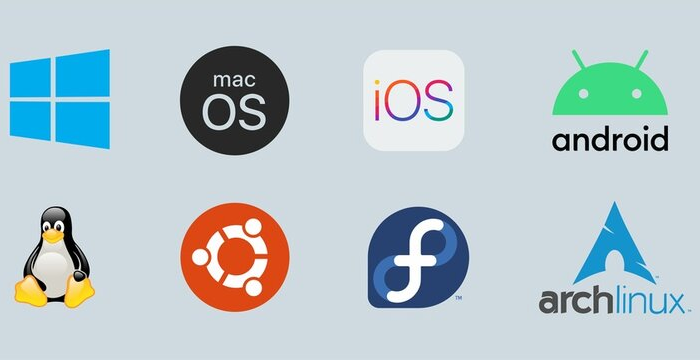Anti-Malware
Malware comes in a wide variety of forms, including viruses, worms, Trojan horses, spyware, ransomware, and botnet software, all of which can compromise your computer and data. Visiting infected websites, opening infected attachments, and inserting removable drives are some of the common ways that malware is used. Malware developers often use “social engineering” to get users to infect their own computers. For example, users may be fooled by phishing methods that generate infected attachments or lead to fake websites designed to appear legitimate.
Click here to download Free Malware Removal
What is Anti-malware
Anti-malware resources are complete solutions that provide security for the computer and protect sensitive data transmitted over a network or stored on local devices. Anti-malware tools often include several components, including anti-spyware and phishing tools, as well as antivirus solutions for large viruses, which are isolated and identified by security resources.
the Anti-malware tools can use scan tools, policies, freeware, or licensed tools to detect rootkits, worms, Trojan horses, and other potentially harmful software. Each type of malware resource has its own interface and its own system requirements, which has an impact on the user solutions for a given device or system.
How to recognize and detect malware
Many symptoms are considered common signs of malware infection, although many types of malware work without warning you of their presence. In fact, hidden programs can be even more dangerous than general programs because they can lead to acts such as identity theft and credit card fraud. If you notice that something is wrong, these signs may mean malware:
- Performance problems- Does the computer turn slowly or break down frequently? Even small amounts of malware can slow down or crash your computer by reducing hard disk resources while running in the background.
- Unexplained PC behavior-If events you did not initiate occur, you may be infected. Common behavioral changes include mysterious new toolbars, unexplained changes to home page settings, and suspicious search results.
- Interruptions from pop-ups and spam- Although many pop-ups and emails from reputable companies are safe, adware programs that generate malicious pop-ups are able to install spyware to hack your browser and capture your personal information, even with commercials good reputation.
Why you need anti-malware software
Because malware distributors are constantly changing their methods, effective anti-malware software uses multiple detection methods. These include the detection of known malware, methods of detecting suspicious behavior by inspecting malware code or allowing it to run in a protected manner, and reputation-based systems containing information about malware. current malware “in the wild”.
That’s why computers, as well as devices such as tablets and smartphones, need anti-malware software that is also updated regularly to combat the latest threats.
How anti-malware works
To cope with the ever-changing threat landscape, effective anti-malware solutions must offer multiple levels of protection. A good first layer relies on a robust database of black URLs and IP addresses, updated in real time, which should be blocked. Then, a file without a known URL or IP is classified as a known good or bad file, or requires additional inspection. Then, the heuristic or behavior-based layers decide whether to prevent a file from running according to the desired action. If an action is unusual or harmful, this layer of malware protection will categorize a file as malicious.
Finally, a method known as sandboxing is often used to isolate a file when there is not enough information to decide on the category of a file. Many anti-malware solutions offer some type of sandbox, but the speed and efficiency of this process vary considerably.
Only a tiny fraction of malware threats exceed the first robust layer of protection against malware. However, because of the sheer number of threats faced by online users, a fraction of these threats still pose a serious threat. How pervasive is malware?
If you use a computer, you are likely to be infect. In fact, nine out of ten computers connect to the Internet are infect with spyware that can:
- Expose you to identity theft
- Expose your personal information and private accounts
- Corrupt your hard drive
- Share your passwords and usernames
Here are the main features to look for in anti-malware software:
- Virus scanning, which is done in the background and the scan file or program will only open when the antivirus program has full scan the system. Most antivirus programs have a real-time scanning feature that can quickly detect the presence of malicious files on your PC.
- Blocks malicious script files and prevent them from running, because they expose your computer to the risk of being infect with malware.
- Automatic updates are required to track and detect new threats that did not exist during antivirus software installation.
- Malware removal is important because many types of malware can harm your computer. However, many free audio-visual programs can be limited to detecting and blocking malware, but can not remove them from an infected computer. For that, you will probably need to buy a paid version of antivirus or specialized software in the removal of malware.
- Database of known malware which compares each digitized file to the contents of the database.
What is the best anti-malware software?
RAM Antivirus software protects your business on many levels. For example, the RAM Malware Removal tool has several features, including real-time monitoring, detection, forensic analysis, and removal. It also blocks all (potentially malicious) files and disrupts suspicious installations that attempt to change settings.
Differences between anti-malware and antivirus
While the terms malware and virus are often use interchangeably, historically they haven’t always refer to the same thing. A virus is a type of malware, but not all forms of malware are viruses. Viruses are the most common type of malware; it is a type of malicious code that is use to gain access to a computer or data network in order to cause damage. Viruses were considere older and more well-known threats, such as Trojans, viruses, keyloggers, and worms. A virus is a program that can replicate itself, while malware is a program that attempts to achieve a certain goal but does not self-replicate. Malware has become a term used to describe the latest and increasingly dangerous threats spread through malicious advertising (malvertising) and zero-day exploits.
People May Also Like…
Operating System (OS) security
Securing Operating System: Protecting Digital Environments In the rapidly changing world of technology, operating system (OS) security is a vital line of defence against online attacks. Operating system security is the first line of defence
Data protection
What is the data protection Data protection has grown to be of utmost importance to both individuals and organizations in the connected. world of today, where information travels quickly across many digital
What is a security software
Security software It is impossible to overstate the value of strong security software in today's digital world. Individuals and organizations must take proactive measures to safeguard their sensitive data and defend against
Website reputation analysis
Website reputation analysis Websites are incredibly important for establishing an online presence for businesses, organizations, and people in the modern world. Analysis and evaluation of a website's reputation are crucial because there are







